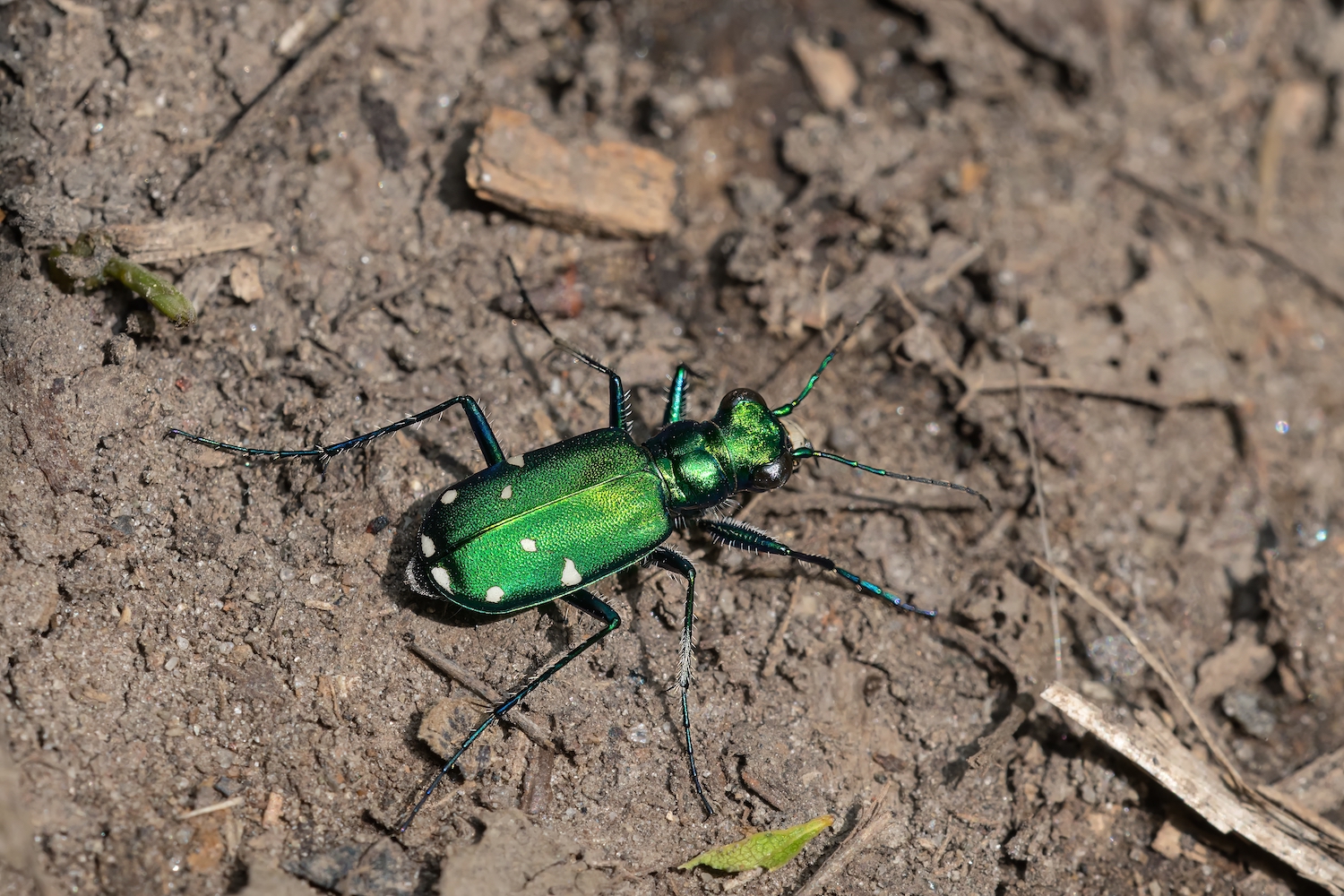Six-spotted tiger beetles: Flashes on the forest floor

If a flash of green keeps catching your eye as you hike through the woods, you could be on the trail of a six-spotted tiger beetle.
More than 350,000 beetle species inhabit the world, with more being identified all the time, but six-spotted tiger beetles are an easy one to identify based on their appearance, even if your glimpse of them is only fleeting. These beetles can easily be recognized by their bright green metallic looking backs, although sometimes they may appear more blue or bluish green in color, according to the University of Minnesota Department of Entomology.
In addition to their bright color, they are also noted for their fast-moving behavior, always seeming to be just a step ahead of you and then leaping out of the way. Their fast dashes across the forest floor are so fast that the beetles temporarily lose their vision because their eyes can't keep up with how fast their bodies are moving, the University of Minnesota Department of Entomology reports. This is why you see them only move such a short distance each time they jump ahead.
If you are able to get a better look at them, you'll see that these beetles also have six long, thin legs; big, bulging eyes; and large, jutting mandibles shaped like sickles. You'll need to get a good, long glimpse of these beetles to see their eponymous spots. The white spots are located on their wing covers, called elytra, the entomology department reports. Although their name might have you believe otherwise, they do not always have six spots. They can have more or fewer, and some may even have no spots at all.
The fact that we see these beetles in the woods is unique. They are the only one of the more than 140 tiger beetle species in the United States that can tolerate shady environments, the Indiana Department of Natural Resources reports. They are mostly seen along paths in forested areas, but most other tiger beetle species typically prefer open, sunny areas with sandy soil.
We most often see six-spotted tiger beetles in late spring and early summer because of their life cycle, which takes about two years to complete. They go through complete metamorphosis, which means they have four distinct stages in their life cycle: egg, larva, pupa and adult. The females lay their eggs in holes in the soil in June or early July, the Indiana DNR reports. When the eggs hatch, the larvae spend a year underground in the soil. They are not often seen at this stage because they remain below ground, but they look like grubs or tiny caterpillars.
Eventually, the pupae emerge from underground, and they transform into adults within a month of emerging. This transformation to adult is complete in the spring, which is why late spring and early summer are the time of year they are most often spotted, the Missouri Department of Conservation reports.
In their adult and larval stages, these beetles are carnivores, eating other insects and arthropods, the entomology department reports. The adult beetles can hunt down their prey with their fast-moving abilities. As larvae, they ambush their prey from their burrows in the soil. They are beneficial to us because they help control the population of the species they eat.
Despite their distinctive appearance, six-spotted tiger beetles are sometimes confused with emerald ash borers, an invasive beetle species that can damage and destroy ash trees. Both are green, although six-spotted tiger beetles are a brighter, flashier shade of green. The tiger beetles are also much quicker than emerald ash borers, which move slowly, according to the entomology department. If you can get a good look, check out the body shape too. Emerald ash borers have longer bodies that are pointed at the posterior end while six-spotted tiger beetles have a more rounded posterior.
